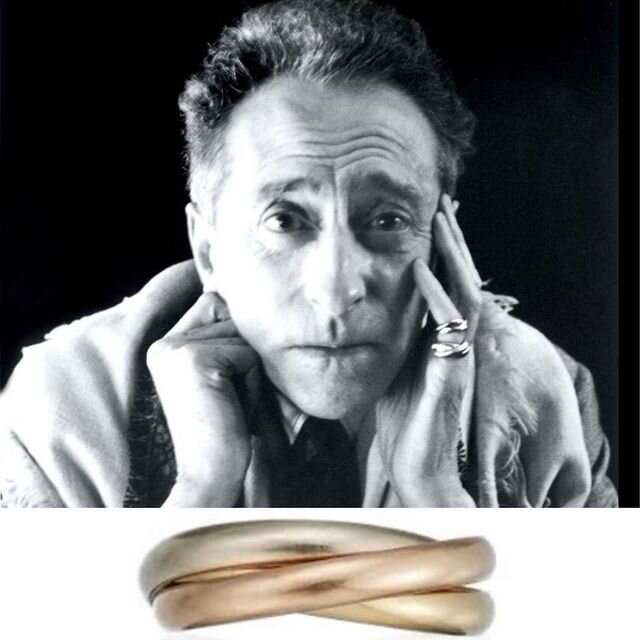The Cartier Trinity Ring: its origins
Stories surrounding the origin of this ring are as numerous as its many names: the #baguetroisors, #baguetroisanneaux (the #triplegoldring or #tripleringedring); the #rollingring, the #Russianweddingring or the #Trinityring. What’s clear is that when Cartier launched the simple platinum (later white gold), yellow gold and rose gold interlocking rings in 1924, the pared-back jewel —not a gemstone in sight—was a brave departure from the more extravagant accessories of the time.
Legend has it that the ring was inspired by a friend of Louis Cartier: the rebellious artist #JeanCocteau (see previous post). Perhaps under the influence of opium, Cocteau is said to have told Louis that he had envisaged the rings around Saturn in a dream and wondered if Cartier could transmute their likeness into a ring because the idea of something so large and universal being represented by something so small and personal entranced him.
Whether or not this story is true (even Cocteau’s family weren’t sure when I asked them), the role the artist played in helping Cartier’s triple ring achieve its iconic status is indisputable. When the literary bad boy of Paris wore two together on his little finger, the six interlocking bands piled up powerfully on top of each other, it became a cult accessory, and not just among gay men. In the 1940s, it was adopted by one of the most prominent men in Europe, another man who had chosen to defy convention, in his case by giving up the throne for love: the #DukeofWindsor (2nd image).
Soon after creating the ring, Cartier experimented with other triple jewels. #ElsiedeWolfe was an early adopter of the #triplebracelet, while Vogue was also a fan, with a 1925 feature on the “new Jewelry from Cartier,” both “amazingly chic” and “very moderate in price (3rd image –intriguingly, the model #KendallLee ended up marrying Cartier New York’s head salesman, #JulesGlaenzer!).
100-odd years on and the #1920sring is still going strong: I wear one almost every day (4th image) – love the history behind it but also, it just goes with everything and remains amazingly modern. I guess it’s the simplicity that makes it timeless. Any other #triplering fans out there?!



